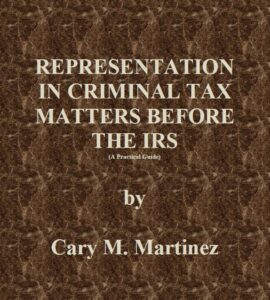Representation in Criminal Tax Matters before the IRS
It is important for you to understand the difference between the civil and criminal sides of the IRS, because they are very different, and their employees play by very different sets of rules. Let’s start with the civil side of IRS, the side with which you may most likely be familiar.
There are three primary civil functions within IRS: examinations, collections, and taxpayer assistance. IRS actually used to be physically divided along these functional lines, along with an appeals division for appealing civil determinations. The Criminal Investigation Division was sort of a separate appendage.
The IRS Restructuring and Reform Act of 1998 prompted a comprehensive reorganization of IRS, which had not happened in nearly 50 years. The stated objective was to organize IRS in such a way as to resemble the private sector model of organizing around customers with similar needs. The four primary civil operating divisions are now called Small Business/Self-Employed (SB/SE), Wage & Investment (W&I), Large and Mid-Size Business (LMSB), and Tax Exempt and Government Entities (TEGE). (See Table 1-1)

